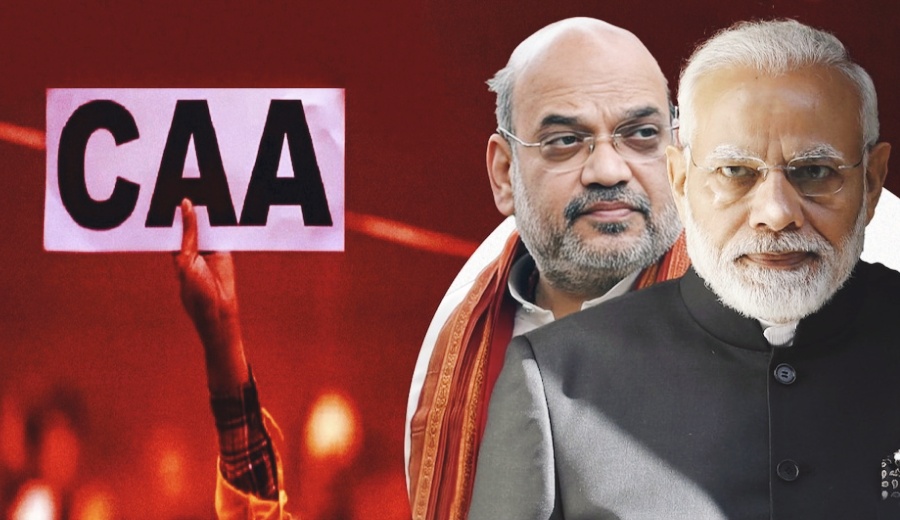The Citizenship (Amendment) Act, 2019 guidelines were issued by the Central government on Monday, clearing the way for the law’s execution. The new laws, according to Home Minister Amit Shah, will make it possible for minorities who are oppressed in Pakistan, Bangladesh, and Afghanistan due to their religious beliefs to become citizens of India.
“With this notification, PM Narendta Modi Ji has delivered on another commitment and realised the promise of the makers of our constitution to the Hindus, Sikhs, Buddhists, Jains, Parsis and Christians living in those countries,” he wrote in a post on X.
Amit Shah also made available a PDF with the updated regulations.
The law facilitates the process of obtaining Indian citizenship for non-Muslim refugees who arrived in India from the three countries on or before December 31, 2014.
The main points of the Citizenship Amendment Act regulations are summarized here.
Who is eligible to apply under Section 6B for citizenship?
Applications for naturalization or registration to obtain citizenship will not be accepted until
- The individual is of Indian descent.
- The individual is wed to an Indian national.
- The individual is a minor kid of an Indian citizen.
- The individual’s parents are listed as Indian citizens.
- The individual was a citizen of Independent India, as were either of his parents.
- The individual is listed as the holder of an Overseas Citizen of India card.
Specific paperwork must be submitted with the application.
According to the new regulations, applicants for Indian citizenship may need to provide two unique documents. An affidavit sworn by an Indian citizen must attest to the applicant’s character. One of the languages specified in the Eighth Schedule of the Constitution must be sufficiently understood by the applicant.
“A person who meets the requirements for naturalization under the terms of the Third Schedule may apply for award of citizenship by naturalization. The application is made in Form VIIIA, which comprises the following:
- A statement from an Indian national attesting to the applicant’s character as well as an affidavit confirming the accuracy of the claims made in the application.
- A certification from the candidate attesting to his sufficient proficiency in one of the languages listed in the Eighth Schedule of the Constitution.
According to the rules, proficiency in the language will be deemed sufficient for those who can read, write, and speak it.
The applicant should also have a statement with him that states that, should his application be accepted, he will forever relinquish his citizenship in his home country.
The Modi government today notified the Citizenship (Amendment) Rules, 2024.
These rules will now enable minorities persecuted on religious grounds in Pakistan, Bangladesh and Afghanistan to acquire citizenship in our nation.
With this notification PM Shri @narendramodi Ji has…
— Amit Shah (@AmitShah) March 11, 2024
How to follow the CAA regulations.
In order to apply for registration or naturalization under section 6B, the applicant must submit an electronic application to the Empowered Committee via the District Level Committee, as informed by the Central government.
The documentation that the applicant submits with their application will be verified by the District Level Committee, which is chaired by the Designated Officer, if applicable.
The applicant will take the oath of allegiance as prescribed by the Second Schedule to the Citizenship Act, 1955 (57 of 1955), which the Designated Officer will administer. The applicant will then sign the oath of allegiance and submit it electronically to the Empowered Committee, along with a confirmation regarding the verification of the documents.
The District-Level Committee will transmit the application to the Empowered Committee for consideration of rejection if, after being given reasonable opportunities, the applicant does not show up in person to sign the application and take the oath of loyalty.
